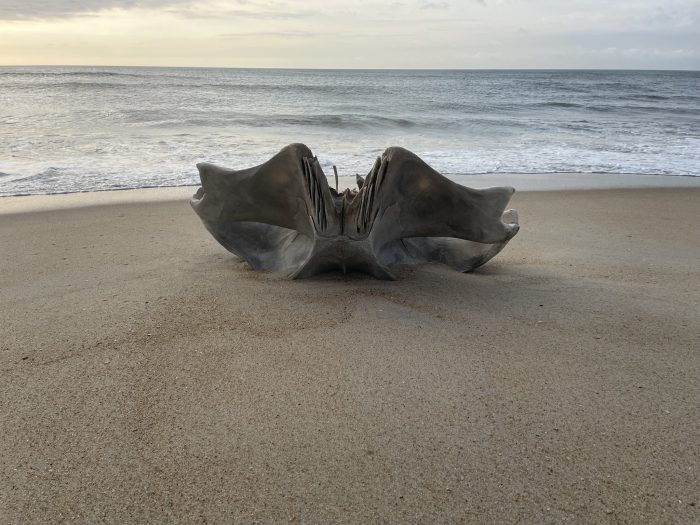Humpback whale skull washes ashore in Salvo

A humpback whale skull was discovered just south of off-road vehicle (ORV) ramp 23 in the Salvo area this week, according to an update from the Cape Hatteras National Seashore (CHNS).
This particular humpback whale was a sub-adult size, and the portion of the skull in the photo above is the cranial cavity, which measured about 3 ft. x 2 ft. in size.
Humpback whales have specialized skull structures to support their unique feeding behaviors. Their skulls are relatively flexible, especially around the jaw joints, which enables them to open their mouths wide in order to consume large volumes of water and prey.
Per CHNS staff, this is not the first time that part of a whale skull has washed on the National Seashore beaches. Every year, the Outer Banks get 1-2 large whale strandings. Sometimes the carcass is buried, and bones are unearthed with tide events. Other times, they decompose at sea, and bones wash ashore with the tides.
“The Outer Banks of North Carolina, known for history, hurricanes, and shipwrecks, also happens to be a hotspot for marine mammal activity,” stated CHNS in a social media update. “At any given time, a wide arrangement of marine mammals move about and feed very close to Cape Hatteras beaches, influenced by the southern Gulf Stream and the northern Labrador Current colliding off our coast. Given its location on the Outer Banks, the barrier island chains extend into the Atlantic Ocean and come in very close proximity to the continental shelf, and for this reason, a large number of strandings occur within park boundaries.”
The skull is in CHNS’ possession and will be used for educational purposes in the future.







